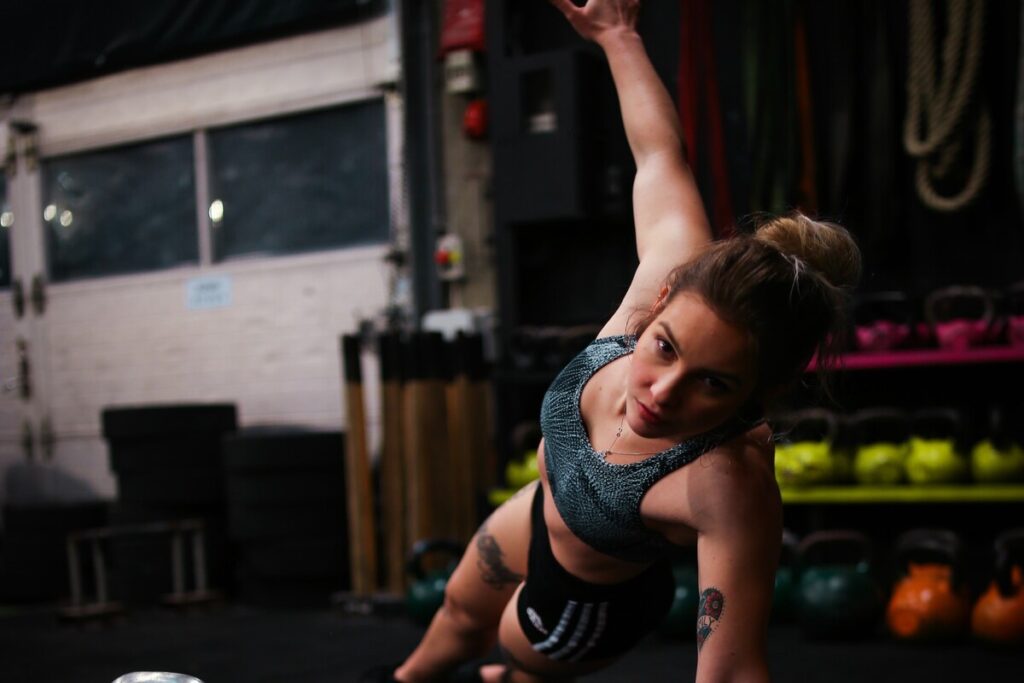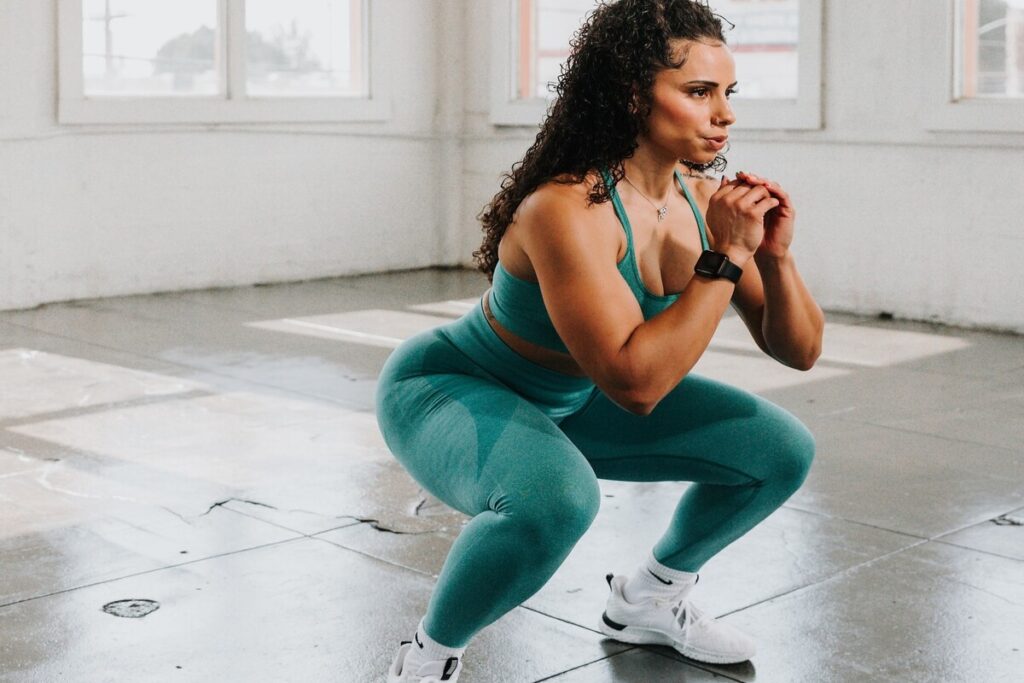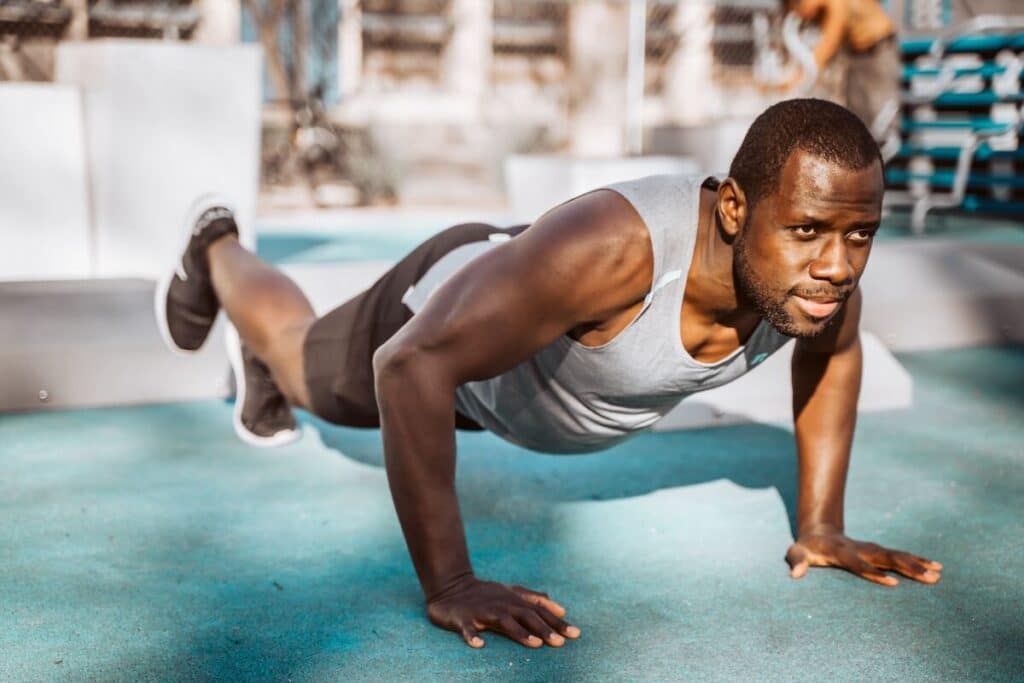If you’re seeking a highly efficient and effective way to torch calories and maximize fat loss, you can achieve this with just a 30-minute HIIT (High-Intensity Interval Training) session. Not only does this type of workout challenge you both mentally and physically but it’s also been touted as one of the most effective methods for burning calories.
In this article

But how many calories can you really burn in a 30-minute HIIT workout? Keep reading to find out. We’ll also be diving into the science behind calorie burn in HIIT, as well as exploring different factors that can affect your overall calorie expenditure during these workouts.
How many calories does a 30-minute HIIT workout burn? On average, a 30-minute HIIT workout can burn approximately 250-400 calories for an individual weighing around 150-180 pounds (68-82 kilograms). However this can vary based on various factors, including your weight, intensity level, and the specific exercises performed.
How does HIIT help burn calories?
High-Intensity Interval Training (HIIT) is a type of workout that involves short bursts of intense exercise followed by periods of rest or low-intensity exercise. These workouts can be done in as little as 20 minutes, making them an ideal choice for people who are short on time but still want to get in a good workout.
The reason why HIIT is so effective at burning calories is that it increases your heart rate and metabolism during high-intensity intervals. This means that you continue to burn calories even after your workout has ended!
Additionally, HIIT helps build lean muscle mass, which also contributes to an increased metabolism and calorie burn throughout the day.
What are the factors that affect calorie burn?
You might be surprised to learn that the number of calories you burn during a high-intensity interval training session can vary based on several factors. Here are some of the things that can affect your calorie burn:
- Your weight: The more you weigh, the more calories you’ll burn during exercise.
- Your fitness level: If you’re new to HIIT or haven’t been exercising regularly, your body may not be as efficient at burning calories yet.
- Duration and intensity: The longer and harder your workout is, the more calories you’ll burn.
- Rest intervals: Shorter rest periods between intervals can increase calorie burn.
It’s important to keep in mind that while calorie burn is an important factor in any workout program, it shouldn’t be the only thing you focus on. HIIT offers many other benefits, such as improved cardiovascular health and increased muscle strength.
So even if your calorie burn isn’t as high as you’d like it to be, don’t let that discourage you from reaping these other rewards. Remember that taking care of yourself is about more than just burning calories – it’s about feeling strong and healthy so that you can serve others with energy and vitality.
The Science Behind Calorie Burn in HIIT
During a HIIT workout, your body goes through various physiological changes that lead to an increase in calorie burn. Research has shown that HIIT induces numerous physiological adaptations that improve exercise capacity (maximal oxygen uptake, aerobic endurance, anaerobic capacity, etc.) and metabolic health in both clinical and healthy populations(1).
The main reason for this is that HIIT workouts push your body beyond its usual limits, causing it to consume more energy and oxygen than any other type of exercise. One of the key factors that contribute to higher calorie burn during HIIT is EPOC (excess post-exercise oxygen consumption).
This phenomenon occurs when your body continues to use oxygen at a higher rate even after you’ve finished your workout. This means that even though you may have stopped exercising, your body is still burning calories at an increased rate as it works to restore itself back to its pre-workout state.
A study comparing energy expenditure in resistance, aerobic, and HIIT exercises found that caloric expenditure was significantly higher during HIIT exercises performed on a hydraulic resistance system (2).
The total caloric expenditure during a 30-minute HIIT session was greater than resistance, treadmill, and cycling exercises of the same duration. This suggests that individuals can burn more calories in a HIIT session than spending the same amount of time performing a steady-state exercise session.
Sample HIIT Workouts and Calorie Burn
I’ve personally found that HIIT workouts are the perfect way to torch calories and get in shape.
I’ll be discussing two popular time intervals for HIIT workouts: 30-minute sessions and 45-minute sessions.
We’ll explore how many calories you can expect to burn with each type of workout, as well as some sample routines to try out.
30-Minute HIIT Workouts and Calorie Burn
If you’re short on time, try these minute HIIT workouts to maximize your calorie burn. These quick and intense workouts are perfect for those who have busy schedules but still want to stay in shape. The high-intensity intervals followed by short rest periods will elevate your heart rate and keep your metabolism going even after the workout is over.

Here is a 30-minute HIIT workout and an approximate range of the calorie burn it can burn:
- Warm-up (5 minutes): Start with light cardio exercises such as jogging in place, jumping jacks, or high knees to elevate your heart rate and warm up your muscles.
- Circuit 1 (10 minutes):
- Exercise 1: High knees (30 seconds)
- Exercise 2: Burpees (30 seconds)
- Exercise 3: Mountain climbers (30 seconds)
- Exercise 4: Jump squats (30 seconds)
- Repeat the circuit for a total of 3 rounds.
- Rest (1-2 minutes): Take a short rest to recover and prepare for the next circuit.
- Circuit 2 (10 minutes):
- Exercise 1: Jumping lunges (30 seconds)
- Exercise 2: Push-ups (30 seconds)
- Exercise 3: Plank jacks (30 seconds)
- Exercise 4: Bicycle crunches (30 seconds)
- Repeat the circuit for a total of 3 rounds.
- Cool-down (5 minutes): Finish the workout with light stretches to promote recovery and flexibility.
The calorie burn during a 30-minute HIIT workout can range from approximately 250-400 calories for an individual weighing around 150-180 pounds (68-82 kilograms). Keep in mind that this is an estimation, and the actual calorie burn may vary based on individual factors.
To track your precise calorie burn, you may consider using a fitness tracker or heart rate monitor that takes into account your specific information, such as age, weight, and heart rate during exercise.
45-Minute HIIT Workouts and Calorie Burn
Here’s a 45-minute HIIT workout you can follow along with:

Workout:
- Warm-up: Jogging in place or jumping jacks – 5 minutes
- Circuit 1:
- Burpees: 45 seconds
- High Knees: 45 seconds
- Jump Squats: 45 seconds
- Push-ups: 45 seconds
- Rest: 15 seconds
Repeat Circuit 1 for a total of 3 rounds.
- Circuit 2:
- Mountain Climbers: 45 seconds
- Plank Jacks: 45 seconds
- Bicycle Crunches: 45 seconds
- Squat Jumps: 45 seconds
- Rest: 15 seconds
Repeat Circuit 2 for a total of 3 rounds.
- Circuit 3:
- Jumping Lunges: 45 seconds
- Tricep Dips: 45 seconds
- Russian Twists: 45 seconds
- High Plank Shoulder Taps: 45 seconds
- Rest: 15 seconds
Repeat Circuit 3 for a total of 3 rounds.
- Cool-down: Stretching exercises – 5 minutes
Estimated Calorie Burn:
The calorie burn during a 45-minute HIIT workout can range from approximately 350-550 calories for an individual weighing around 150-180 pounds (68-82 kilograms). Again, this is an estimation, and actual calorie burn may vary based on individual factors such as age, gender, muscle mass, and overall fitness level.
Combining HIIT with Other Exercises
To make the most of my workouts, I like to combine HIIT with other exercises like strength training or yoga.
Maximize your calorie burn and push yourself to the limit by incorporating HIIT exercises into your regular workout routine. HIIT is a great way to get your heart rate up and boost metabolism, but combining it with other exercises can take your workout to the next level.
I like to start my routine with some light cardio, like jogging or cycling, before moving on to a HIIT circuit that includes bodyweight exercises like burpees, jumping jacks, and mountain climbers.
After completing the HIIT portion of my workout, I like to finish off with some strength training exercises using dumbbells or resistance bands. This combination of cardio, high-intensity intervals, and strength training helps me burn more calories overall while also building lean muscle mass. Plus, it keeps things interesting and prevents boredom in my workouts.
Give it a try and see how much you can challenge yourself!
Tips for Maximizing Calorie Burn in HIIT Workouts
Now that we know the benefits of combining HIIT with other exercises, let’s talk about how to maximize calorie burn during HIIT workouts. As someone who’s always looking for ways to optimize my fitness routine, I’ve discovered a few tips that have helped me get the most out of my HIIT sessions.
- Push yourself during each interval: Firstly, it’s important to push yourself during each interval. This means going all out and giving it your best effort. The harder you work, the more calories you’ll burn.
- Incorporate compound movements into your routine: These are exercises that work multiple muscle groups at once, such as burpees or squat jumps.
- Add resistance training to your HIIT workout: You can do this by using weights or resistance bands. Building muscle mass can increase your metabolic rate and help you burn more calories throughout the day.
Frequently Asked Questions
Do you still have questions? Here are some commonly asked questions about this topic.
Can HIIT workouts be incorporated into a daily routine?
Yes, I love incorporating HIIT workouts into my daily routine! They’re quick, effective, and can be done anywhere. Plus, they provide a great opportunity to boost energy levels and clear the mind for the rest of the day.
Are HIIT workouts suitable for beginners?
As a beginner, it’s important to ease into HIIT workouts and gradually increase intensity. A qualified trainer can guide you through modifications for your fitness level. Safety is key!
How long should a HIIT workout last for maximum calorie burn?
For maximum calorie burn, a HIIT workout should last between 20-30 minutes. As a fitness enthusiast, I recommend focusing on intensity and proper form to reap the benefits in the shortest amount of time possible.
Is it necessary to have equipment for a HIIT workout?
I’ve found that equipment isn’t always necessary for a great HIIT workout. Bodyweight exercises like burpees, mountain climbers, and jump squats can be just as effective. Plus, it’s more convenient to do anywhere!
Can HIIT workouts be done at home or do they require a gym membership?
Yes, HIIT workouts can be easily done at home without any equipment or gym membership. All you need is a small space and your body weight. It’s a great way to burn calories and improve fitness levels.
Final Word
Overall, I’ve found that high-intensity interval training (HIIT) can certainly help you burn calories and lose weight. The key to maximizing your calorie burn during a HIIT workout is to push yourself to your limits during the high-intensity intervals, while still allowing for adequate rest during the recovery periods.
Factors such as age, gender, weight, and fitness level can all impact how many calories you’ll burn during a HIIT workout. Choosing the right exercises and structuring your workouts properly can also play a big role in optimizing calorie burn.
Key Takeaways
- On average, a 30-minute HIIT workout can burn approximately 250-400 calories for an individual weighing around 150-180 pounds (68-82 kilograms).
- The number of calories burned during a HIIT session varies based on weight, fitness level, duration, intensity, and rest intervals.
- HIIT workouts can burn significant calories, with exercises like burpees, jumping jacks, high knees, and mountain climbers burning 8-15 calories per minute in a 30-minute workout.
- Combining HIIT with other exercises like strength training or yoga can maximize calorie burn and build lean muscle mass.
- HIIT workouts are effective at burning calories even after the workout has ended, and can be done in as little as 20 minutes.
So, if you’re looking for an efficient way to torch some calories and get in shape fast, incorporating HIIT into your exercise routine may be just what you need!
